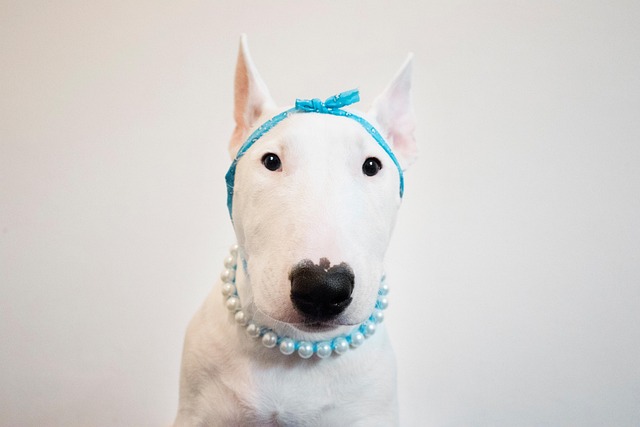
Gastrointestinal disease in dogs symptoms
Sudden change in your dog’s eating habits—like turning up their nose at their favorite kibble or begging excessively—might be more than just a fussy phase.
I sat with my friend Lila on her Chicago apartment floor last week, watching her 2-year-old Shih Tzu, Mochi, scratch her belly until the fur came loose—red, bumpy patches spreading under her legs, and she whimpered every time her paw brushed the rash. “I tried wiping it with a wet cloth, but she just hides under the couch. How do you treat a dog's itchy rash without making her more upset?” Lila asked, holding a tube of her own anti-itch cream (which I quickly stopped her from using). If you’re a new U.S. dog owner staring at a pup in discomfort, the key is gentle, vet-vetted steps—never human products—and pairing treatment with calm, positive reinforcement.
To understand how to treat a dog's itchy rash, let’s break down why the itch happens. A dog’s skin is thinner than ours, with a delicate barrier that keeps irritants out. When that barrier breaks (from allergies, fleas, or even dry air in apartments), their body releases histamines—the “itch chemical” that makes Mochi scratch. Lila’s vet explained it like this: “Scratching makes the rash worse, which makes them scratch more—it’s a vicious cycle.” Punishing a dog for scratching (like scolding Mochi) violates U.S. animal welfare standards—they’re not misbehaving, just trying to soothe pain. Instead, we need to stop the itch first, then fix the cause.

Here’s how to treat a dog's itchy rash, step by step, using Lila’s care for Mochi: First, clean and protect the area gently. Use lukewarm (not hot) water and a soft cloth to wipe away dirt—hot water irritates sensitive skin. Pat dry (don’t rub!) and apply a vet-approved oatmeal spray (look for “colloidal oatmeal”)—it calms redness without stinging. Mochi hated this at first, so Lila gave her a freeze-dried chicken treat afterward—positive reinforcement made her sit still by the third day. Second, cut the “itch cycle” with topical relief. For dry, flaky rashes, warm a teaspoon of unrefined coconut oil between your hands and pat it on (safe if licked in small doses). Mochi stopped chewing her paws within 48 hours. Avoid human creams—they often have steroids or fragrances toxic to dogs. Third, fix the root cause at home. Mochi’s rash was from dust mites (common in apartment carpets), so Lila washed her bed weekly in hot water (130°F kills mites) and added a HEPA air purifier near her bed. If the rash is from fleas, use a vet-prescribed spot-on treatment—over-the-counter ones can be too harsh. Fourth, adjust their diet for skin health. Add a teaspoon of plain pumpkin (fiber) or fish oil (omega-3s) to their food—Lila mixed fish oil into Mochi’s kibble, and her skin barrier strengthened in a week.
For apartment living, keep a “rash kit” handy: oatmeal spray, coconut oil, soft cloths, and treats. Avoid scented candles or air fresheners (they irritate sensitive skin) and vacuum carpets twice a week. When walking, stick to paved paths (tall grass has fleas and pollen) and always carry poop bags (Chicago fines $200 for leaving messes—even when rushing home to treat a rash). Never skip vet visits if the rash doesn’t improve: Mochi’s rash faded in 5 days, but if it had oozed or spread, Lila would have gone back—signs of infection need antibiotics. Keep your dog’s rabies vaccine up to date (required nationwide)—vet checkups let you rule out serious causes like mange or food allergies.
A week later, Lila texted me a photo: Mochi curled up on the couch, no sign of scratching, her belly fur growing back. How do you treat a dog's itchy rash? For Mochi, it was gentle care, fixing her environment, and lots of treats. It’s not about “quick fixes”—it’s about calming their discomfort and healing their skin, one kind step at a time.

Sudden change in your dog’s eating habits—like turning up their nose at their favorite kibble or begging excessively—might be more than just a fussy phase.

I sat with my friend Elena in her Los Angeles apartment last weekend, where her 3-year-old Dachshund, Oscar, was huddled on the couch—scratching a red

I sat with my friend Lila on her Chicago apartment floor last week, watching her 2-year-old Shih Tzu, Mochi, scratch her belly until the fur came loose

Dogs with arthritis often struggle with daily movements, so knowing what to keep them away from is key to easing their pain.

Many pups scratch, lick, or rub their coats more than usual when their skin gets irritated—and it’s not just a minor annoyance.

Cushing's disease in dogs often flies under the radar until subtle symptoms snowball into bigger issues, and many owners don’t realize how it can ripple through their pet’s health.